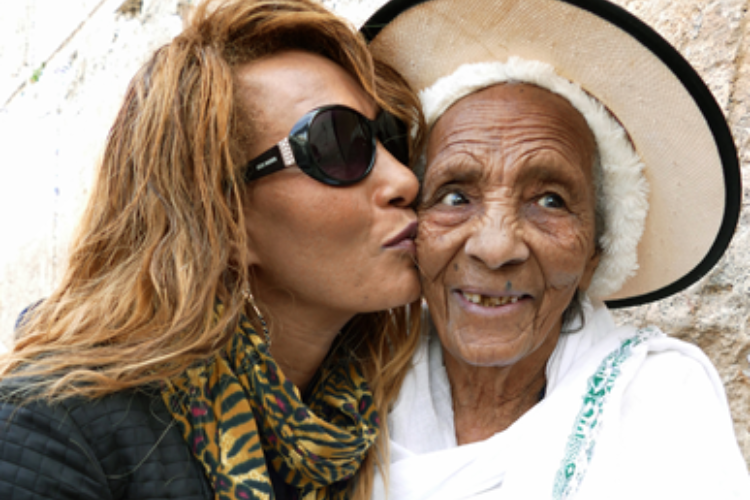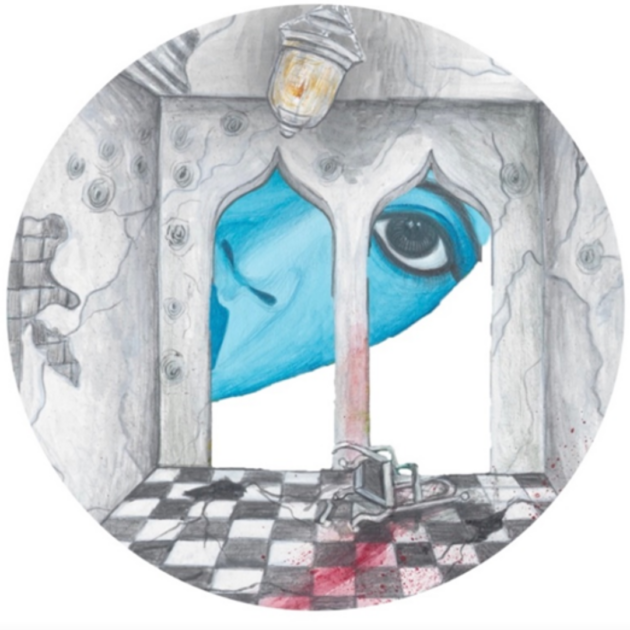
Joan Roth, “Bizu Riki Mullu and Her Mother at the Kotel”
Behold Feminine Power!
The Jerusalem Biennale, postponed in Israel due to the war, will open several exhibitions internationally on November 9th in the home cities of its artists and curators, including the Heller Museum at Hebrew Union College-Jewish Institute of Religion in New York in partnership with the Jewish Art Salon and American Sephardi Federation.
“Activate: A New York Woman’s Perspective” explores multifaceted expressions of feminine power amidst complex and fraught socio-political dynamics tied to bodies and heritage, intimacy and otherness, sex and religion. Organized by Israeli curator Hadas Glazer, “Activate” centers systemic, holistic, female-driven change through diverse works ranging from performance to documentation, with some of the artworks depicting women’s activisms, while others are the activators themselves. Feminine symbols and themes include Lilith, Women of the Wall, the Statue of Liberty, Tikkun HaYam (heal the oceans), Kol Isha (woman’s voice), and the current Israeli hostage crisis.

Siona Benjamin, Parachute Lilith
Lilith’s larger than life face, blue like the limitless sky, floats past the window of a miniature lamp-lit room with peeling walls and overturned chair on a blood-stained, cracked checker-board floor. She personifies freedom and liberation from the violence and physical and psychological constraints evoked by this damaged space.

Ronit Levin Delgado, The Kissing of Liberty
Delgado’s kissing the iconic State of Liberty evokes feminine power and her love for American rights, including freedom of expression. At the exhibition opening, she will move through the gallery space while wrapped in a Mylar Emergency Rescue Blanket covered with posters bearing the faces of the Israeli hostages held captive by Hamas since October 7th.

Goldie Gross, Batsheva as Eleonora
Hasidic tradition and queer politics are synthesized in this vibrantly colored work inspired by Bronzino’s Portrait of Eleanor of Toledo (c. 1543). Batsheva, a formerly Ultra-Orthodox queer woman, takes the pose of the regal Duchess of Florence, engaging the viewer with her piercing gaze.

Joan Roth, Bizu Riki Mullu and Her Mother at the Kotel
Bizu Riki Mullu came to Israel at the age of ten in the 1970s and brought her family there ten years later. The love between daughter and mother, who goes to the Kotel every day, is part of Roth’s landmark photographic documentation of Ethiopian Jewry in Ethiopia, Israel, and New York.

Chelsea Steinberg Gay, Input (video still)
Wearing lipstick and tallit, Gay juxtaposes her singing in a sound-proof booth (at left) with the transduction of her silenced voice into seismographic sketches of vibrations (at right). The open and closed vocal chords pattern is enlarged as the mehitzah (barrier separating men and women in Orthodox synagogues) overlaying her visage. The manicured 3D yad (pointer) (far right) points to what happens when you observe the halakhic prohibition that forbids listening to a singing woman’s voice (kol isha).

Yona Verwer, Living Waters: Turtle Eats Plastic
Verwer’s Mayim Chaim (Living Waters) series addresses the annual dumping of millions of tons of non-degradable plastic in our oceans. Depicting the consequences of sea life interacting with plastic debris extends Jewish environmental land-focused activism with a call to action for Tikkun HaYam to save the oceans. As a Jewish ecofeminist, Verwer looks to the religious tradition of bal taschit, which prohibits the destruction of all things of potential benefit to people.



